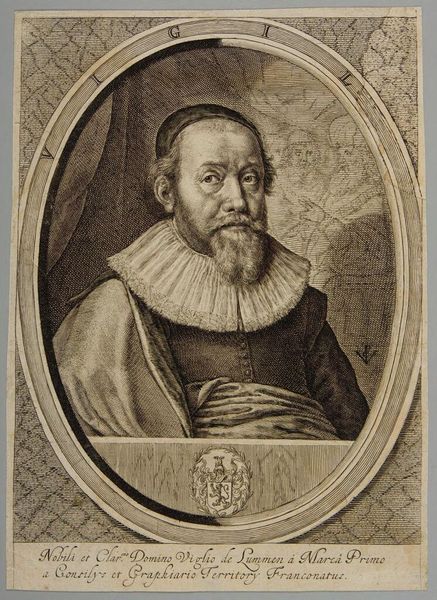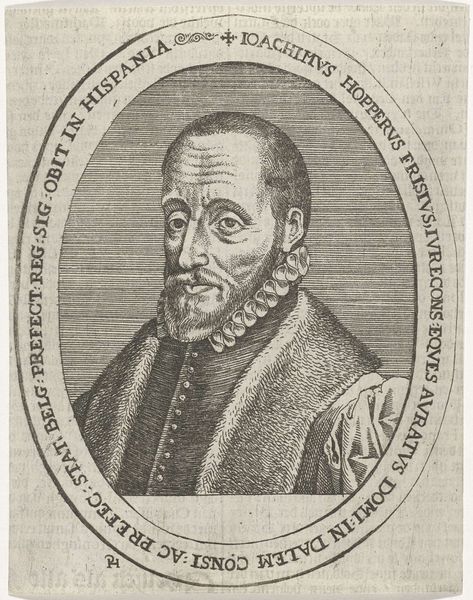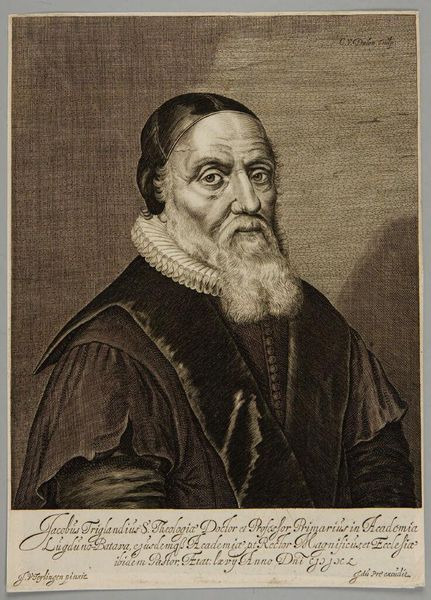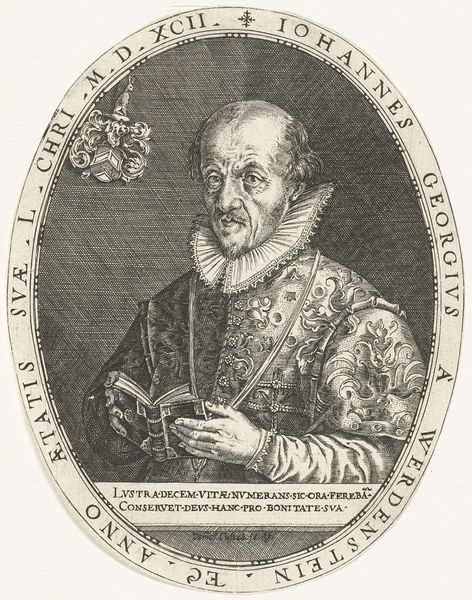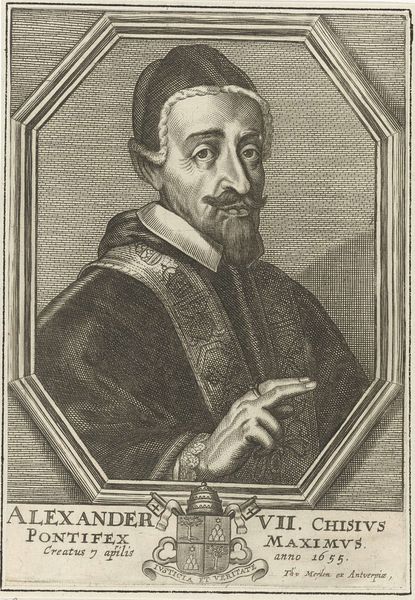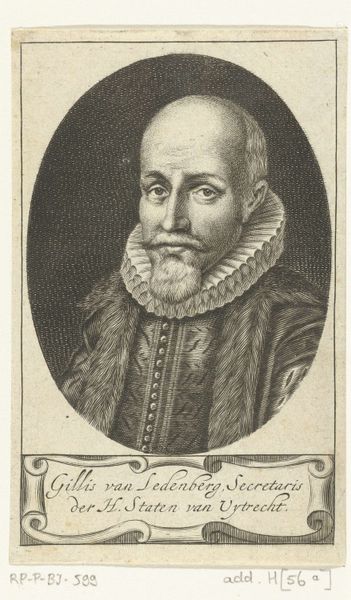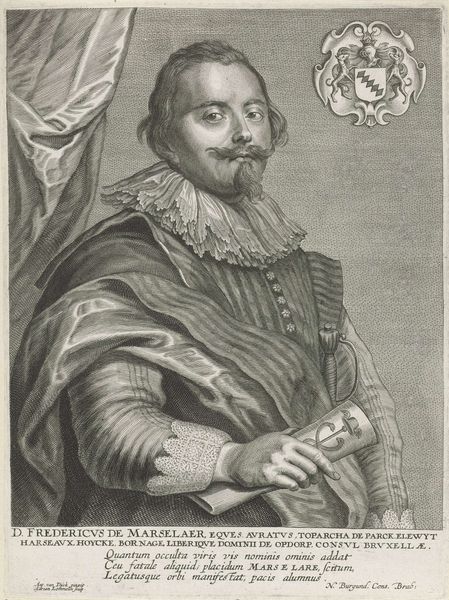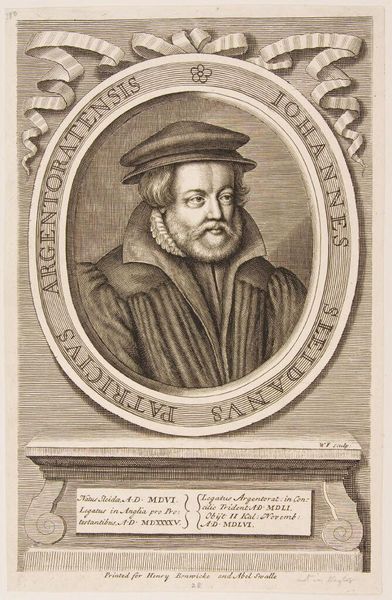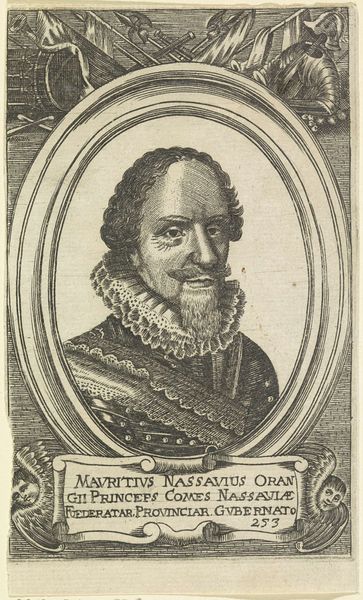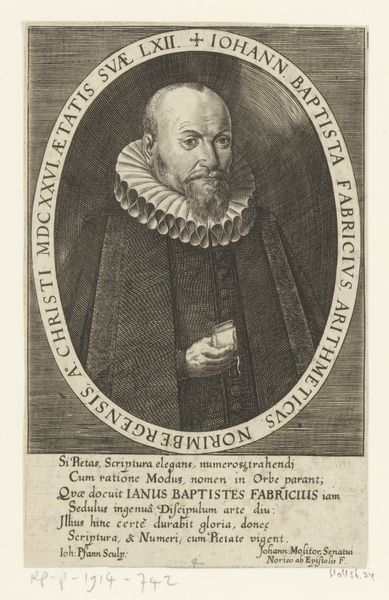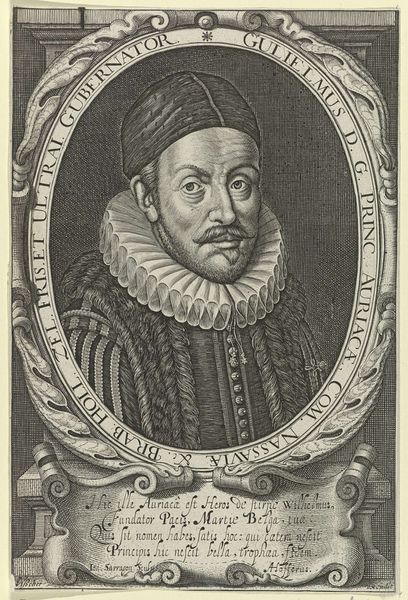
Copyright: CC0 1.0
Curator: Before us, we have George Vertue's portrait of "Joannes Uytenbogaert," residing here at the Harvard Art Museums. Editor: It projects such an air of formal austerity, doesn't it? The stark black and white, the rigid pose, all framed within that ornate oval. Curator: The composition is certainly deliberate. Vertue's engraving technique emphasizes line and texture, notice the intricate detail in Uytenbogaert's ruff, creating visual interest. Editor: And that ruff speaks volumes about status and power. Uytenbogaert was a prominent figure, a leading Remonstrant theologian whose views shaped religious and political discourse. Curator: Precisely, the portrait serves as a visual signifier, reflecting his influence and position within society. The use of monochrome further accentuates a sense of timelessness and authority. Editor: It is undeniably effective, this calculated projection of authority. It prompts questions about the role of imagery in shaping public perception of historical figures. Curator: A fascinating intersection of form and function to consider. Editor: Indeed. It leaves one contemplating the layers of meaning embedded within even the most seemingly straightforward portrait.
Comments
No comments
Be the first to comment and join the conversation on the ultimate creative platform.
